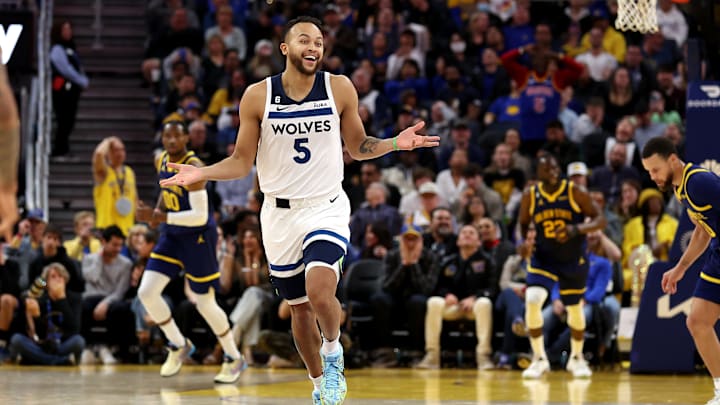The Golden State Warriors acquisition of Kyle Anderson has brought mixed reviews, with the veteran forward having inked a three-year, $27 million contract with the franchise this offseason.
Some believe it's a savvy signing that brings greater depth and versatility to the Warriors front court, while others like Kelly Iko of The Athletic think that it's unlikely to yield too much in the way of success.
Kyle Anderson's arrival at the Golden State Warriors will bring some questions the veteran forward will have to answer almost immediately
The 30-year-old's blend of ball-handling, passing and defense is expected to mix effectively in the Golden State system, but that's not to say that Anderson's addition will be a seamless fit at the start of the season.
Will the former Timberwolves forward be a 25-minute per game player for the Warriors, or more in the 15-20 minute range? The answer will likely depend on Anderson's response to these two key questions.
1. Was last season's three-point shooting a blip or an ongoing concern?
The biggest downside to Anderson's game is his three-point shooting -- an element that may become magnified among a Golden State front court that already lacks spacing options. Anderson's never been a prolific shooter by any stretch, but he has had seasons where he's knocked down shots at a reasonable clip.
He shot 36% on 3.8 three-point attempts per game with the Memphis Grizzlies in 2020-21, while his first season with the Timberwolves in 2022-23 saw him drill 41% albeit on only 1.5 attempts. That plummeted to 22.9% last season, leading to another reduction in attempts at just 0.6 per game.
Is the woeful 22.9% from last season a blip on the rader? Can he get back to shooting mid thirties or closer to 40% from beyond the arc? While Anderson will never be a huge threat from distance, the ability to rediscover his three-point stroke could open up options for Steve Kerr and the coaching staff.
2. Can Anderson and Draymond Green be effective on the floor together?
The answer to this may directly relate to the shooting question, but it's nonetheless an important aspect to discuss. Many have viewed Anderson as a lesser version of Green -- as someone who can come in and simply play the same role when the 4x All-Star heads to the bench.
Anderson should see a majority of the non-Green minutes, but his true impact will be determined by whether the two can play together. That's where Anderson's minutes could spike from 15-20 minutes per game, to somewhere closer to the 25 mark.
Can Golden State be successful with an Anderson-Green front court combination? They can if both figure to be able to hit wide-open shots at a reasonable level, while Anderson's rebounding will have to be improved after a significant dip last season. Where does Jonathan Kuminga fit into this mix as someone who should be getting 30 minutes per game?
These are questions Anderson and the Warriors will need to answer early next season. There can't be too much time experimenting on what may work -- the strength of the Western Conference won't be forgiving if that's the case. There should be optimism on what Anderson can provide the franchise next season and moving forward, but the concerns are also very valid heading into training camp.
